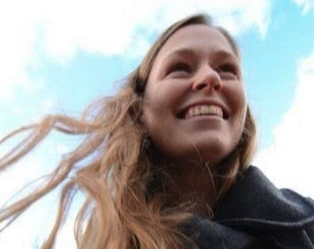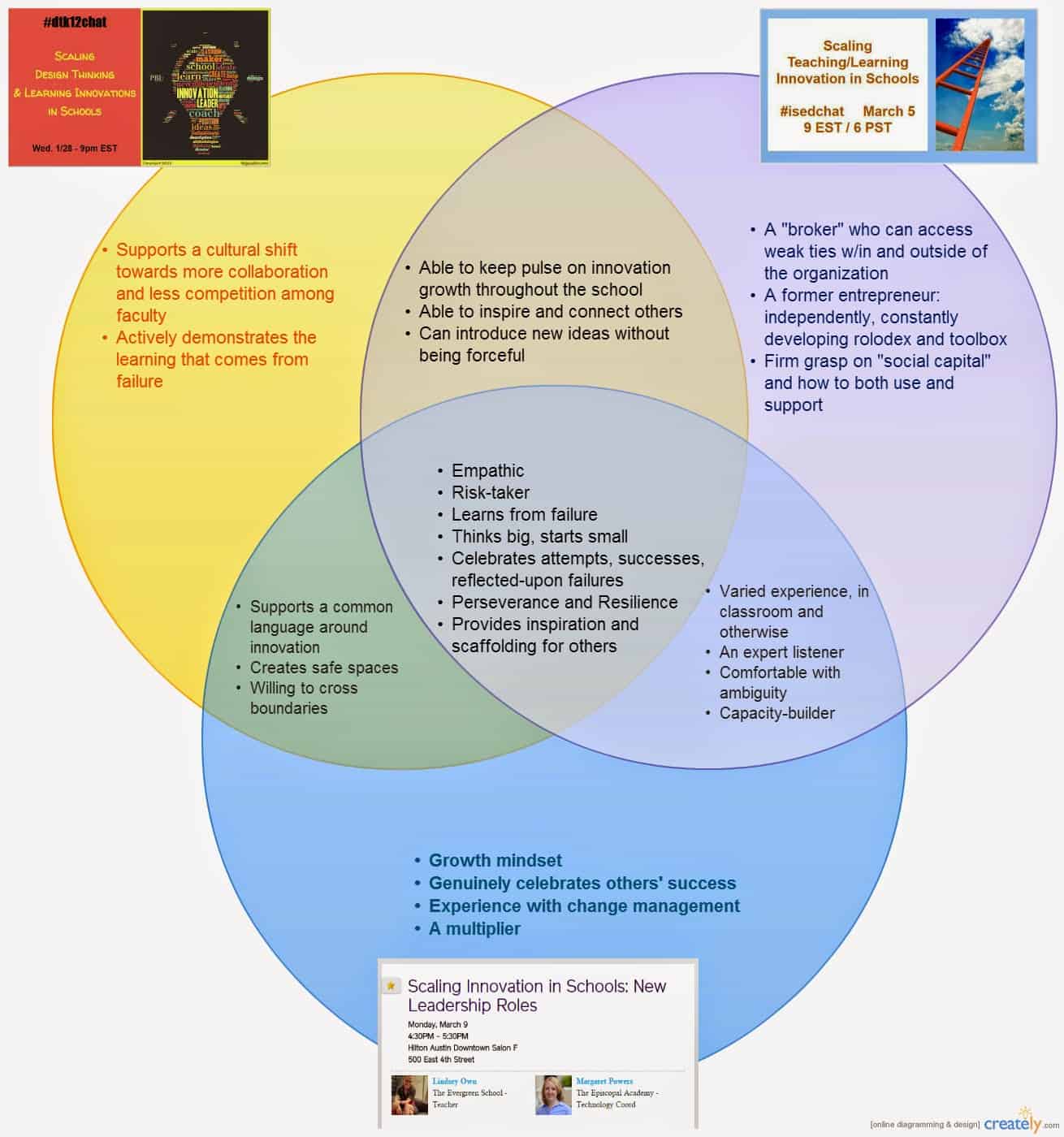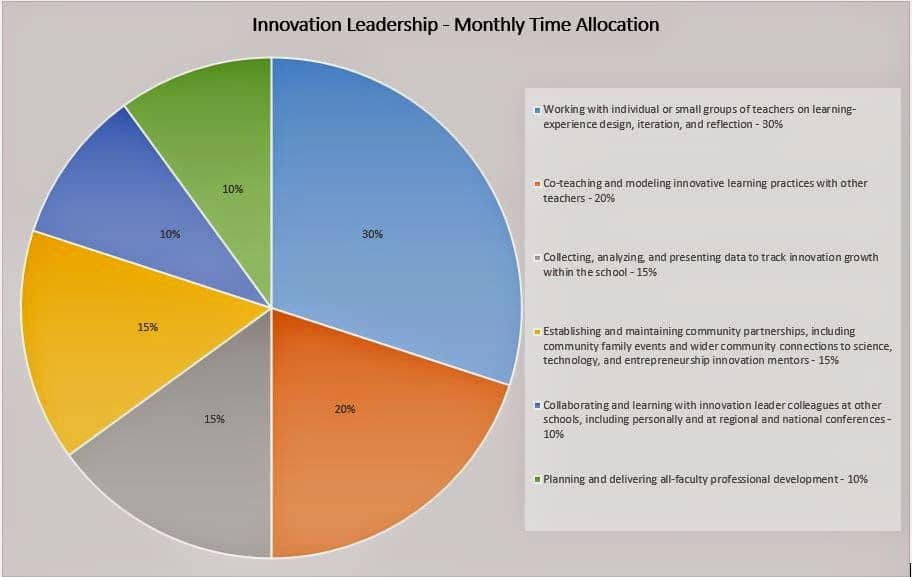Innovation Leadership in Schools

New roles are emerging for educators, teacher leaders, principals, and district officials. These new roles are being shaped by many factors including the shift from managed instruction to personalized models and the role of principals as school and business leaders. This blog first appeared on Teaching Science in the 21st Century, a blog by Lindsey Own, a science and health educator and difference maker who we met while at SXSWedu. In the blog, Lindsey shares a job description that could serve as a template for building innovation leadership in any school.
Lindsey Own
There’s been incredible progress in the past few years with individual, cutting-edge teachers making some incredible gains in innovations like #geniushour, project-based learning, design thinking, the maker movement, and more more more. But how do we SCALE those kinds of innovations wider throughout our schools and throughout the education system? Starting from discussions on Twitter and in our GOA course on Coaching Innovation, Maggie Powers and I have been on a kick about supporting innovation leadership in education…
When our SXSWedu core conversation on exactly that topic – Scaling Innovation in Schools – was accepted, we knew we had our work cut out for us… We co-moderated two separate twitter chats leading up to the conference, one on #dtk12chat and one on #isedchat, to begin building our ideas and lexicon. Our core conversation went excellently: you can find our session resources here and Maggie’s reflections here. Over the course of SXSWedu, I also had at least a dozen separate conversations about what innovation leadership means for advancement of K-12 education. (There are also great conversations happening in the comments here, so this idea is still evolving. Please continue contributing!)
(Another resource for such school innovation leaders is this amazing eBook by David Culberhouse: Scaling Creativity and Innovation.)
My ultimate goal was to pull together all the ideas from our different conversations to craft a “job description” that could serve as a template for building innovation leadership in any school, and potentially even use in defining my own job description as I move into exactly this sort of role in my school (although my job also includes curation of our makerspace, which isn’t discussed here).
Following ridiculous amounts of review and analysis of our three sessions, I put together the following Venn Diagram in creately:
So, here goes nothin’ –
Job Posting: Innovation Learning Strategist
The _____________ School is committed to strengthening and enriching student learning through innovative teaching methods that put the student and his or her own goals for the future at the center of all learning experiences, and empower students to identify and solve problems, bridge content across traditional “subject” domains, and develop an unshakable growth mindset. We define “innovation” as mindsets, design processes, and teaching practices that challenge traditional norms and assumptions. These can take the form of new strategies or iterations or remixes of existing strategies.
Seeking: A listener and risk-taker to lead and support innovative teaching and learning in our school.
Qualifications:
- Varied professional experience, both in classroom settings and outside of schools. Former entrepreneurs encouraged, having demonstrated ability to independently develop professional connections and skills.
- Demonstrated expertise in listening and understanding needs, as well as in introducing new ideas without forcefulness.
- Demonstrated reflection upon and learning from failures. Examples will be requested.
- Demonstrated perseverance, resilience, and comfort with ambiguity. Examples will be requested.
- Provide inspiration and support for faculty and students in developing and implementing new innovative learning opportunities. Connect with teachers individually to support each teacher’s innovation growth from their own starting point and at their own pace. Publicly celebrate attempts, successes, and failures in new endeavors.
- Support development of a community-wide common language around innovation, including faculty, students, families, and local community. Reach out to “outside” community to collaborate and form partnerships.
- Create safe physical and emotional spaces for teachers to explore and develop innovative learning opportunities. Support a cultural shift towards more collaboration and less competition among faculty.
- Build capacity of faculty and students to independently investigate and design new innovations. Act as a multiplier of faculty and student strengths.
- Broker relationships between disparate groups both within and outside the school community. Foster ties between groups with different expertise and daily experience to encourage cross-pollination and boundary-crossing.
- Collect data and track innovation growth throughout the school to support connections, monitor patterns, and provide example cases to others. Data might consist of qualitative project examples and specific feedback from teachers, students, and families, as well as quantitative numbers of students served and events held.
- Establish long-term and quarterly goals for innovation growth milestones within the community. Meet with education administration team at least once per quarter to share data on innovation growth and solicit feedback for continued progress.
- Connect with innovation leaders at other schools, such as:
- Lisa Palmieri at The Ellis School in Pittsburgh
- Martin Moran at Francis W. Parker School in Chicago
- Mary Cantwell and Jim Tiffin at Mount Vernon Presbyterian School in Atlanta
- Brian Lakatos at Miami Valley School in Dayton, OH
- Glenda Baker at The American School in Japan
- Other duties as assigned.
For more, check out:







Norman V Alston
I love seeing what the younger generation is doing to innovate teaching and learning. I see solutions here for students that resonate with me and align with how I learn with children. I think your brilliance shines through. I love how you've laid it out and how you are scaling across the fruited plain.
Derrick Willard
Love this post-great stuff. Have you read Rise of the Deo: Leadership by Design? Right up your alley with these traits....
Lawrence Naicker
I like the manner in which you structured an abstract concept. It makes it accessible to more people and the open-"endedness" provides great opportunity for adaptation and further discussion. The Venn diagram is a great conceptual framework to use as a starting point for discussions around innovative teaching, learning and leadership.
Andrea Stadler-Reinsmoen
Hi,
I'm looking for an international school that is ready to hire and innovative leader. I fit the job description you posted, but I'm having trouble finding a school that's ready. Any leads, ideas, or advice? Greatly appreciate your comments on this.
Andrea Stadler-Reinsmoen